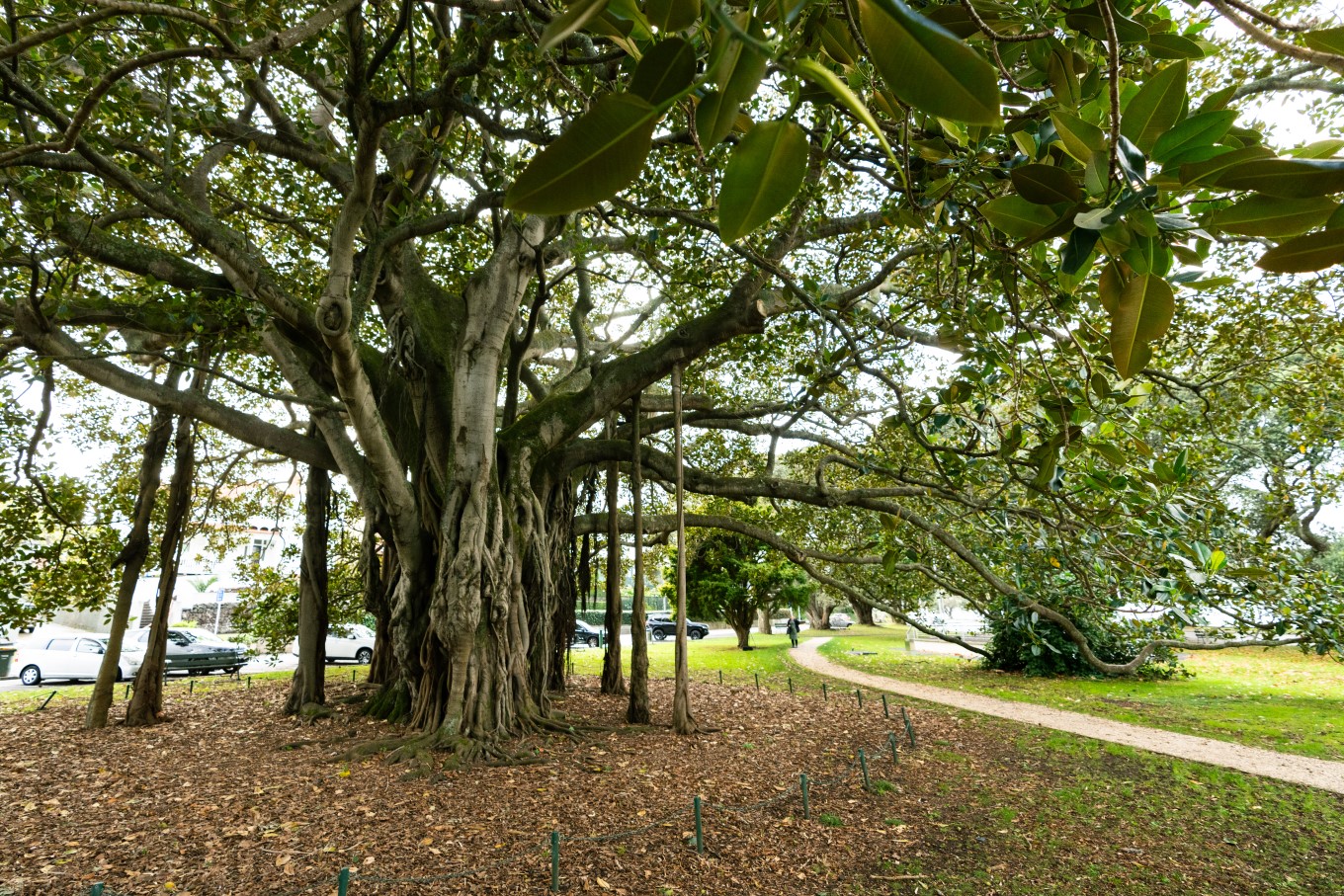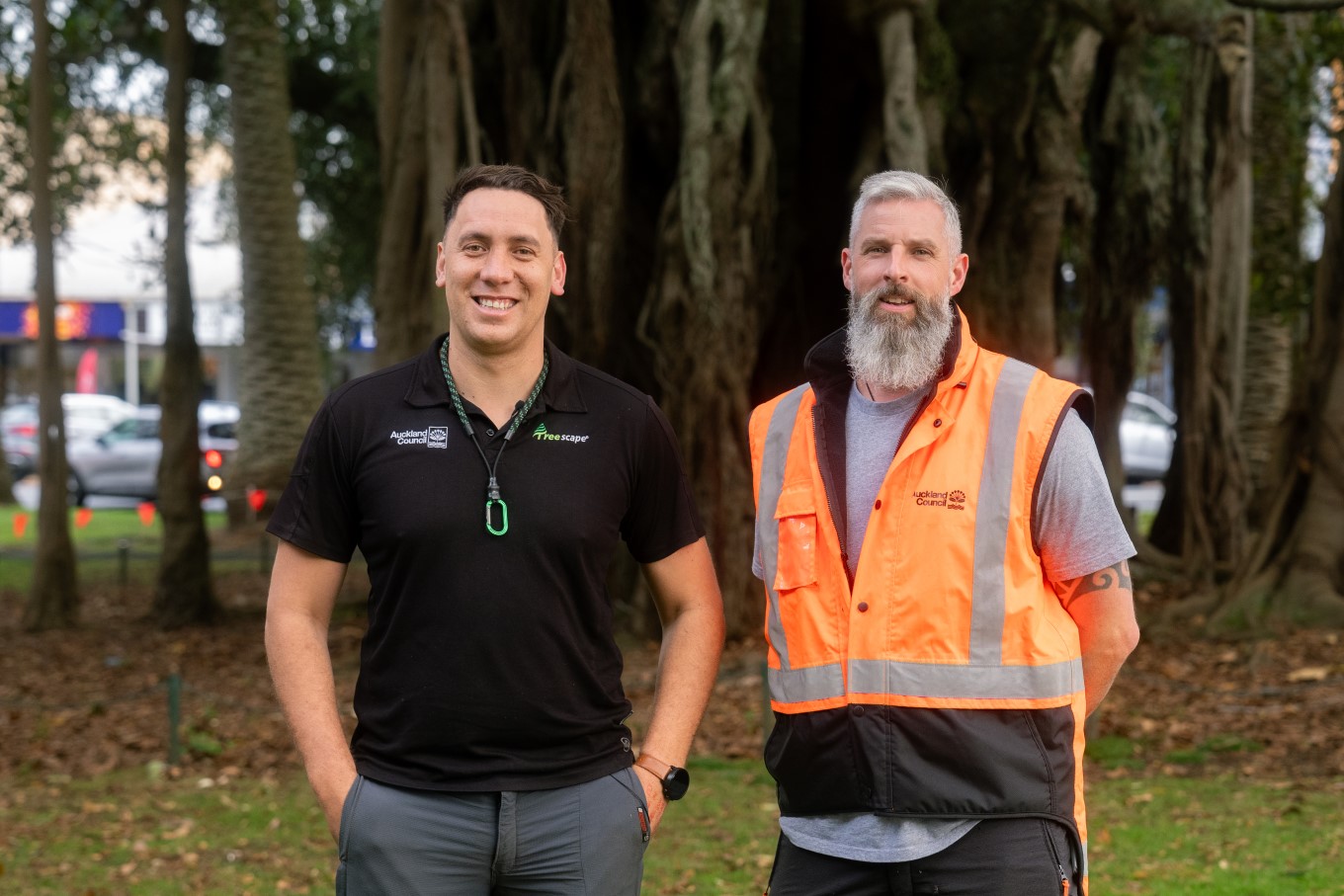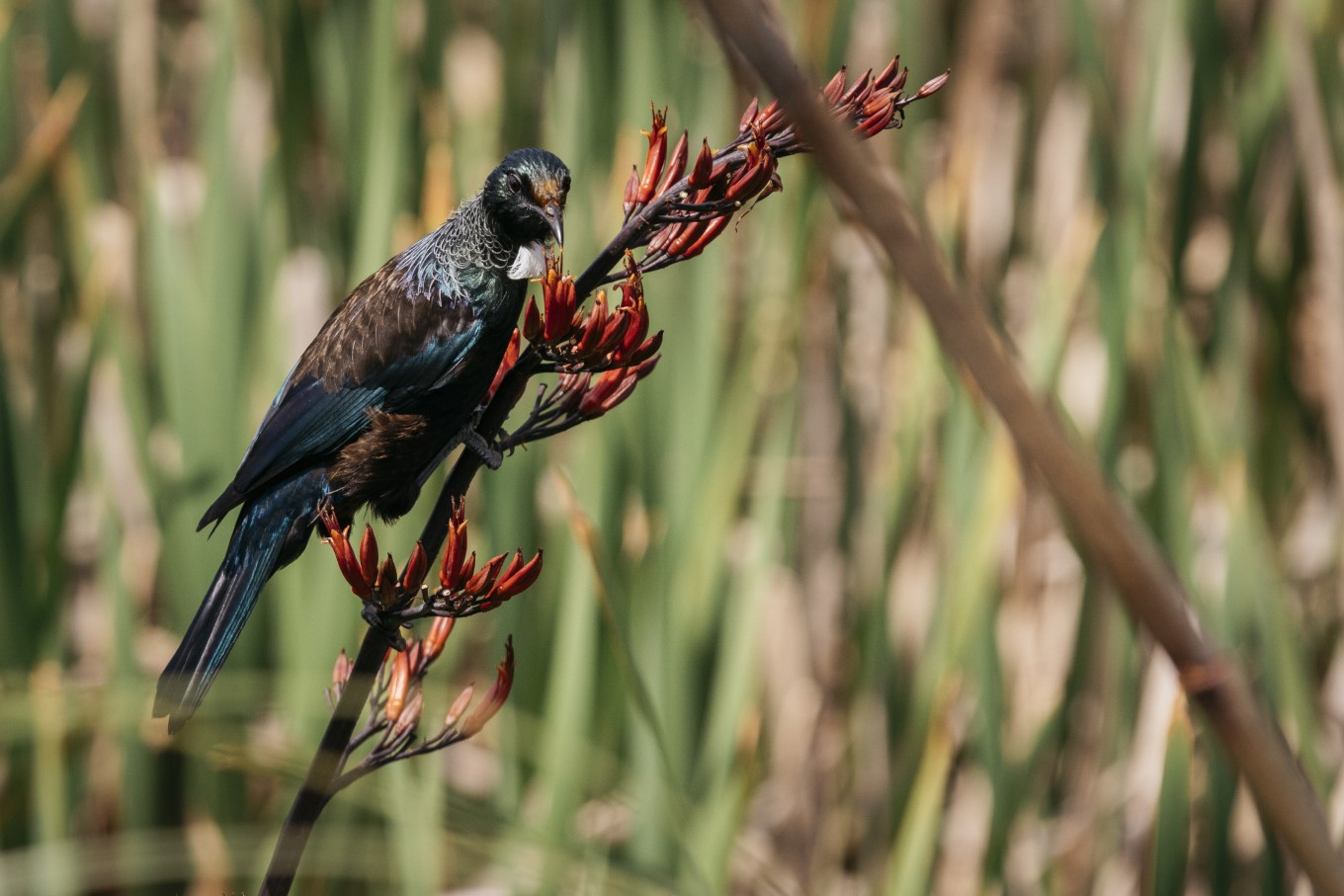From beautiful natives such as pōhutukawa and kauri, to heritage exotics such as the 141-year-old Moreton Bay fig in Devonport, Tāmaki Makaurau has a beautiful and diverse treescape. Arbor Day on 5 June is the perfect time to appreciate these natural wonders by signing up for a community tree planting day, or restoring the biodiversity in your garden by planting natives as part of Auckland Council’s Backyard Birdsong campaign. It’s also an excellent time to visit a park to enjoy our precious rākau (trees) and admire the good work of the council’s team of arborists, who are kaitiaki of the region’s streetside and park trees.
Arborists might be the most misunderstood profession in the region. As caretakers of our rākau, their job is to maintain the health and manage the growth of Auckland Council’s trees. But while performing routine prunings and health checks, arborists are often confronted by members of the public who are concerned they are there to chop down beloved community trees. But that couldn’t be further from the truth, says arborist Adrie Weuring.
“A lot of people identify arborists as tree cutters who are just chopping down trees, when 80 per cent of our job is actually tree health,” explains Adrie, who is Contract Supervisor at Treescape, Auckland Council’s arboricultural contractors.
“We love trees. We are trained and qualified to look after the health of the trees and prune them in a way that works with humanity. The last course of action is actually to cut down a tree – that's the last thing we want.”
Pruning to preserve
With its gnarled aerial root system and sprawling canopy, the Moreton Bay fig Ficus macrophylla in Devonport’s Windsor Reserve is a good example of a tree that has been loved and cared for by arborists for 141 years. While Moreton Bay figs are now no longer able to be bred, distributed, released or sold within the Auckland region due to their epiphytic nature (meaning they grow on other plants), this specimen – nicknamed ‘Old Albert’ – is recognised for its historic and community significance and is one of Auckland Council’s registered notable trees.
Planted in 1883 from a seedling taken from Albert Park, Old Albert’s impressive canopy – which stretches more than 40m high and 40m wide – is regularly maintained by arborists, who remove deadwood to protect the public from falling branches and safeguard the tree from fungal and pest infections.
In the past, the tree’s roots had to be protected with plastic piping and the tree was brought back from the brink when arborists saved it from an insect infestation.
“In 1998, it had an infection of psyllids, which caused the leaves to shrivel up and affected the health of the tree,” says Adrie. “For five years, arborists worked to get rid of the psyllids by pruning a lot of the infested canopy and giving the tree slow-release nutrients to help it return to health.”

Rooted in safety
Scaling tall trees like Old Albert takes a lot of skill and physical strength. Auckland Council’s arborists have arboriculture qualifications and are trained in how to safely climb trees, prune at height and work on an elevated platform, as well as aerial rescue.
The industry follows the Approved Code of Practice (Section 20, Health and Safety in Employment Act), which states that climbers must be attached to anchor points, and a second anchor point is required when cutting. The team carefully assesses the hazards of each site, including ensuring the public is protected from falling branches during pruning.

The arboriculture industry tests its skills in annual competitions where aspects such as speed, aerial rescue and accuracy of the throwline (the first rope thrown by arborists to set their climbing or rigging lines for assent) are assessed.
There is an industry shortage of arborists, and Adrie encourages others to join his team of tree lovers.
“To be an arborist, you must love nature and the outdoors – and be good with heights. I used to climb a lot of trees when I was a kid, and now, as an adult, I enjoy some of the best views in Auckland.”
Plant trees in your backyard to encourage birdsong this Arbor Day.
The best way to attract native birds to your garden is to plant their favourite trees. Auckland Council is encouraging Aucklanders to plant native trees to help the region echo with birdsong and reach their Urban Ngahere (Forest) Strategy goal of increasing canopy cover to 30 per cent. Currently, Tāmaki Makaurau only has 18 per cent urban canopy cover.
Sandra Jack, Auckland Council’s senior community conservation advisor, suggests four things to consider when choosing which native trees to plant in your garden.
1. Plant trees to attract different types of birds.
“Tūī love nectar and fruit, so plant tāwhiri karo (Pittosporum cornifolium), a dense small tree with glossy foliage, or wharariki (mountain flax) for the succulent nectar from their flowers,” says Sandra. “Pīwakawaka (fantail) and the more mysterious but vocal riroriro (grey warbler) both love insects – you'll see their aerial acrobatics as they snatch insects from leaves or out of the air. Plant natives that support insect life like hebes, mānuka or kūmarahou. And remember to leave the leaf litter, which also supports insects."

2. Plant several types of natives
“A variety of plants can provide food at different times of the year, plus they create a diverse habitat that supports a range of animals,” says Sandra.
3. Consider your site carefully
Choose a plant that will suit the site. Consider the sun, wind, shade, and how dry or wet your garden is. Also consider the height the plant will grow to.
4. Once planted, look after your trees
Adding compost to your soil will help enhance the soil microbes and the health of your trees, and pruning will help the tree's health.
“Prune your young trees to ensure they are structurally sound once they mature. Remove diseased, damaged and dead branches, plus any that cross over or rub on others,” advise Sandra.


